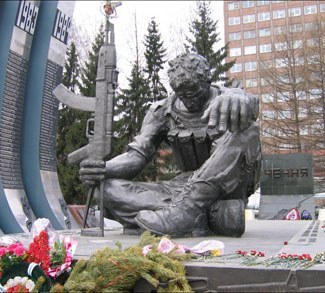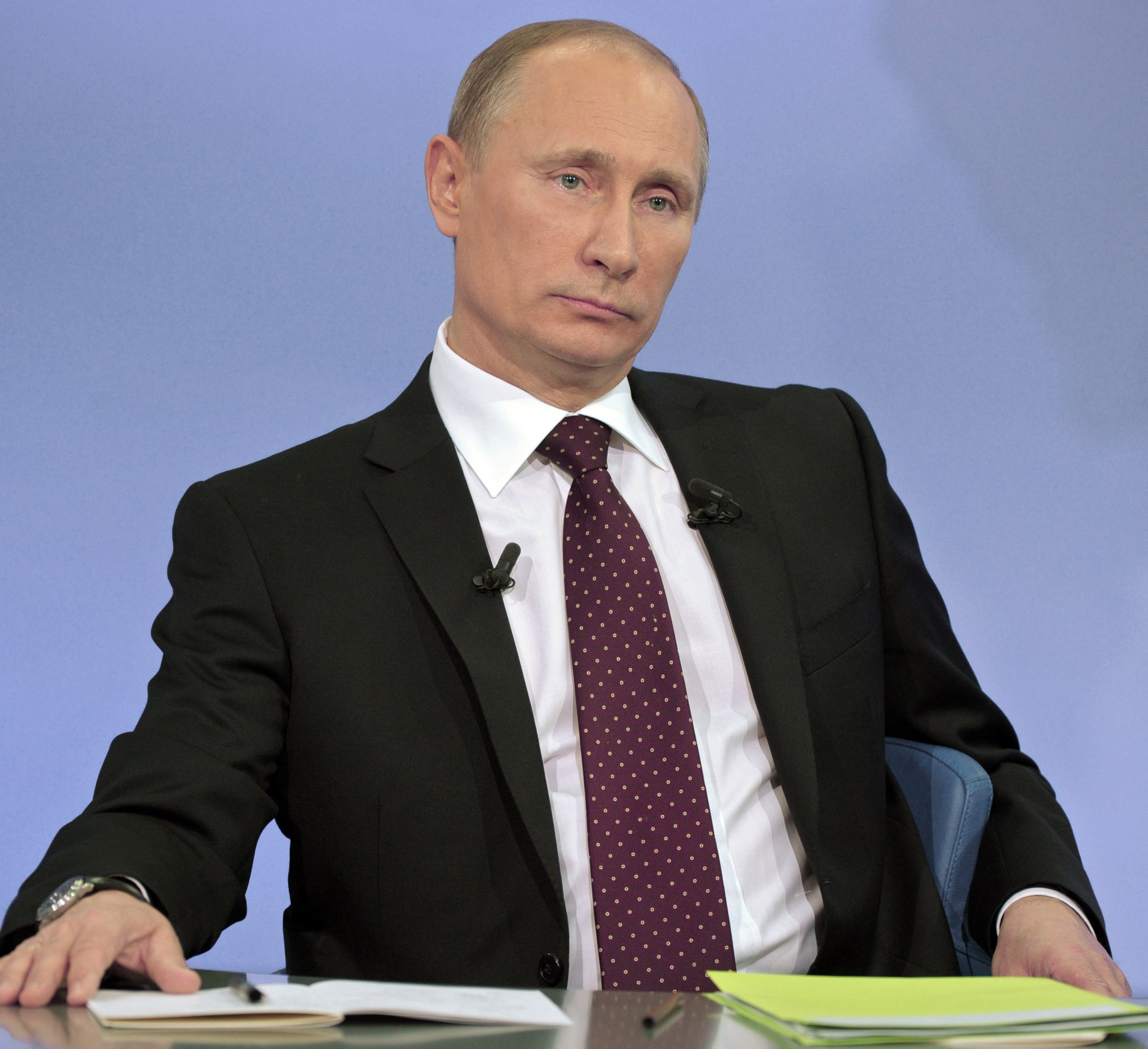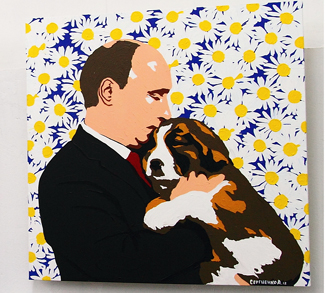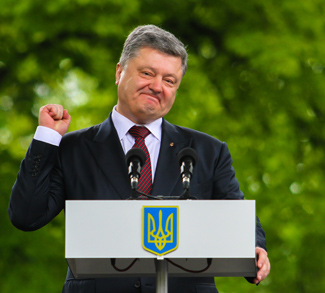The view that Russian President Vladimir Putin has consolidated and strengthened Moscow’s power is commonly held and, indeed, holds much truth. Domestically speaking, Putin has effectively reconstituted Russian state power – aided in part by the appeal of his charismatic ‘strongman’ image. What has emerged is a system of competitive authoritarianism in which Putin governs through formal democratic institutions, but violates rules and processes to such an extent that his regime fails to meet universally accepted democratic standards.
In addition to an iron-fisted grip on domestic politics, the perception exists that Putin’s foreign policy is a testament to Moscow’s strength. For instance, Putin’s close association with the relative stabilization of Chechnya conferred on him the mantle of legitimacy and lent him popular electoral support. When Georgia launched a military offensive against the Russian-backed region of South Ossetia in 2008, Moscow’s response was swift. It deployed army and airborne troops, launched airstrikes, blockaded a part of the Georgian coast and landed marines. The Georgian Navy was handily defeated and on August 12, just four days after Russian forces entered the region, a ceasefire was negotiated.
Moreover, while there was much speculation in advance of the 2014 Sochi Olympics that a terrorist attack was inevitable, no such attack came about. High security at the Games not only deterred an attack, but also bolstered the image of Russian strength or ‘hard power’ in the region. The success of the Sochi Games also lent Russia a measure of ‘soft power’ or credibility that it had not previously enjoyed in the international community. This sensation did not last long, however. Any newly found soft power was squandered with the advent of the crisis on the Crimean Peninsula.
Until late February 2014, the mostly ethnically Russian Crimea was internationally recognized as an autonomous republic of Ukraine. After pro-Russian Ukrainian President Viktor Yanukovych was ousted, Russia denounced interim leader Yatsenyuk’s government as illegitimate and seized control of Crimea. A mid-March referendum saw 96% of voters express support for officially joining Russia; most countries and organizations, including the European Union and United Nations, denounced the referendum as an affront to Ukrainian sovereignty.
Russia stayed its course as reports surfaced of not-so-clandestine Russian fighters active not only in Crimea, but also in Ukraine itself. More recently, US intelligence indicates that the Malaysia Airlines plane that crashed in eastern Ukraine on July 17 was indeed shot down by pro-Russian separatists using an anti-aircraft missile.
The devastating crash and Russia’s policies and behavior under Putin confirm the assertion that Moscow acts to ensure that the “states right around [Russia] are friendly.” Putin will use the entirety of his coercive power to stabilize the Russian periphery, including the Caucasus and Crimea. However, Putin’s strongman reputation and reconstitution of the Russian state aside, we must question the unmitigated perception that Russia is an indomitable power in the region. The Chechnya conflict is a particularly useful lens through which to assess Putin’s rule and Russian strength.
Columbia University’s Kimberly Marten contends that Moscow’s choices in Chechnya since 2003 actually indicate profound state weakness rather than strength. From 1994 to 2009, the republic, a federal subject of Russia, was plagued by sporadic secessionist violence that devastated both infrastructure and the Chechen population. Russia, the crux of a former superpower, became mired in a conflict that was, by all accounts, supposed to be a swift and decisive victory.
The initial Russian response to the outbreak of insurgency in Chechnya is reminiscent of the Soviet war in Afghanistan a decade earlier. In fact, the conflicts share a number of similarities. Both the Soviet and Russian administrations aimed to establish a pro-Moscow government and stabilize the regions. Moreover, Russian forces were superior to their opponents in each conflict, in terms of both numbers and technological sophistication. But Russia’s great power approach, which emphasized conventional mechanized warfare, was ill-suited to the mountains and chaotic urban landscapes of Afghanistan and Chechnya. Insurgents, aware that they could not prevail in conventional warfare, capitalized on Russian authorities’ failure to adapt and innovate; they forced Russian troops into unconventional environments and situations, fostering costly and protracted guerrilla warfare. Compounding military failures in Chechnya was then-president Boris Yeltsin’s political mismanagement.
After assuming the presidency five years after violence erupted in Chechnya, Vladimir Putin declared, “My mission, my historic mission… is to resolve the situation in the Northern Caucasus.” From the outset, then, Putin displayed a keen personal interest in the region. Seeking to distance himself from the mismanagement and humiliation of the final years of Yeltsin’s administration, Putin assumed full responsibility of operations in Chechnya – a move that contrasts starkly with Yeltsin, who preferred to delegate responsibility in an attempt insulate himself from the consequences of conflict.
The initial Russian response to the outbreak of insurgency in Chechnya is reminiscent of the Soviet war in Afghanistan a decade earlier.
The situation in Chechnya in the early 2000s was rocky. Violence and burgeoning Islamic extremism spread beyond Chechen borders into neighboring republics, and there were a number of high-profile terrorist attacks in Russia itself. Despite outnumbering rebels fifty to one, Russian forces were unable to eliminate the small pockets of armed resistance that remained. While 2006 saw the deaths of rebel leader Shamil Basayev and Chechen President Aslan Maskhadov, it was clear that Russia’s conventional approach to armed conflict remained untenable if violence in Chechnya was to be stamped out completely.
To quell the conflict and accomplish his historic mission, Putin turned to new means of control. He augmented military operations with economic and political strategies, providing Chechnya with millions of dollars for reconstruction and installing local warlord Ramzan Kadyrov to power in 2007. Marten notes that by 2010, “Kadyrov… had legal command over the vast preponderance of security forces located in the republic… Moscow, in other words, granted Ramzan a virtual monopoly over the legitimate use of force in Chechnya, ceding the basic building block of sovereignty.”
Kadyrov is responsible for rooting out insurgents, winning over former rebels, and inspiring genuine popular support among a war-weary population. Through Kadyrov, Putin was better able to effectively stabilize Chechnya by augmenting military operations with economic and political strategy. The official argument of the Russian state is that Kadyrov stabilized Chechnya and, by extension, made Russia more secure, by making terrorist activities on Chechen territory more difficult and dangerous for the perpetrators. But Kadyrov’s personal militia is also renowned for using severe selective violence to target rebels and their families – a vicious and potentially volatile bedfellow for Putin in an already unstable region. Indeed, violence began to diffuse across Chechen borders around 2003, in part the result of Chechen insurgents and warlords seeking to destabilize the region in an effort to divert Moscow’s attention from Chechnya.
Speaking about the MH17 tragedy, President Barack Obama referred to the “steady flow of weapons from Russia” and held Putin accountable for the rebel’s actions. That Moscow provides arms and, potentially, other support, to unpredictable rebels is reminiscent of its devolvement of power to Kadyrov.
All told, it was not until 2009 – a full fifteen years after the outbreak of violence in Chechnya -that official counter-terrorism operations were declared at an end. Russia may not, strictly speaking, have “lost” the war in Chechnya, or the war in Afghanistan, for that matter. However, both Boris Yeltsin and Vladimir Putin failed to decisively win it. Conflict in Chechnya, and in the Caucasus more broadly, casts doubt on the widely held belief that Putin’s state is strong. Similarly, far from confirming Russia’s military prowess, escalating conflict in eastern Ukraine indicates an aggressively defensive Moscow with a shaky grip on its frontier regions.




